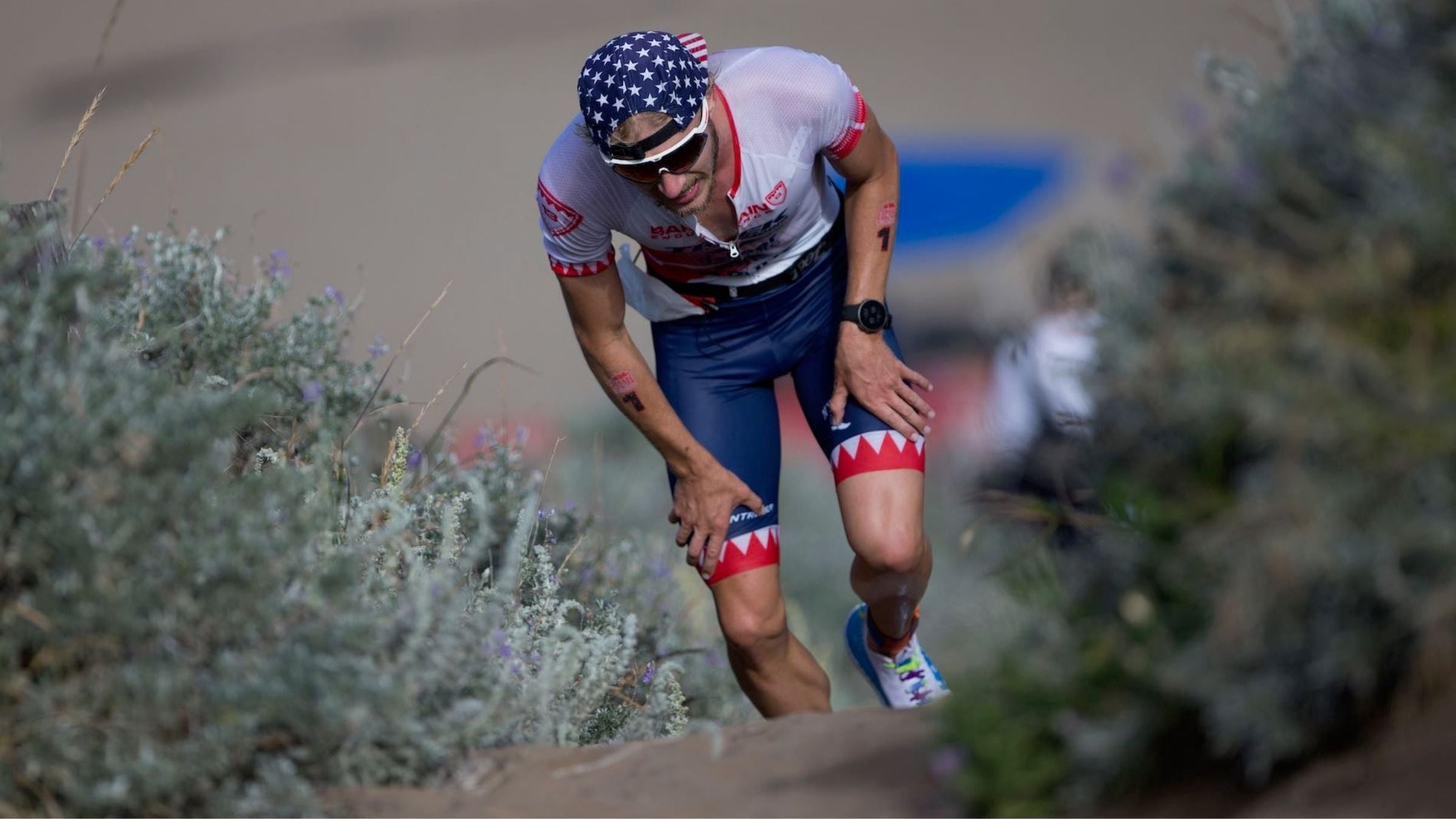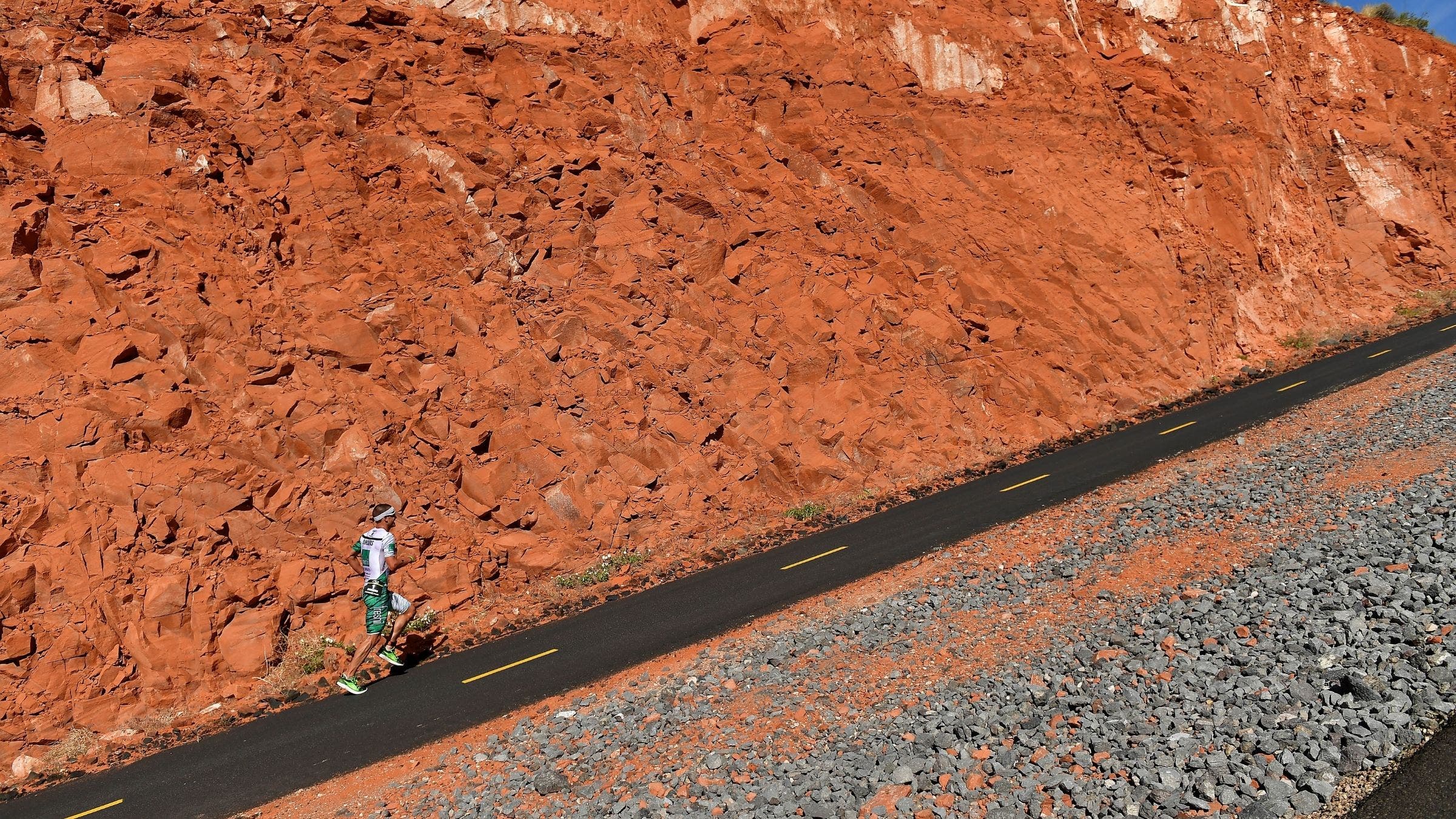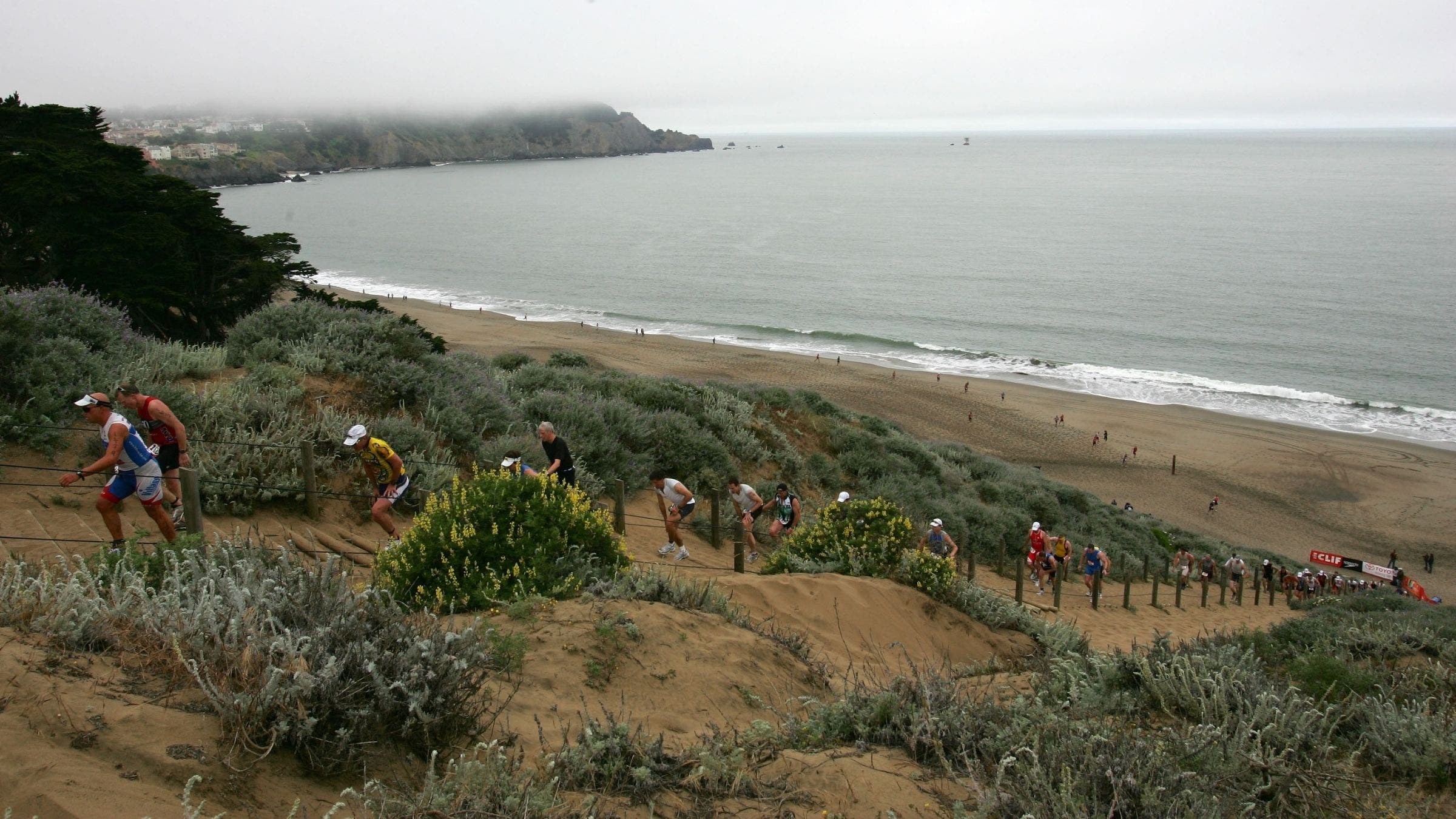The 5 Toughest Run Courses In Triathlon

(Photo: Rocky Arroyo)
By the time you’ve reached the run of a triathlon, a lot of things have peaked—including temperatures and your mental state. The final leg is when you find out if you’ve paced yourself well on the swim and the bike, every steep climb can feel like a mountain, and the sweltering heat can take its toll. When asked about some of toughest run courses on the race circuit, our pool of veteran pros said these races still haunt their multisport dreams.
RELATED: 5 Most Epic Triathlon Swim Courses
RELATED: Triathlon’s 7 Most Brutal Bike Courses

Ironman/Ironman 70.3 St. George
This notoriously difficult course—which was an Ironman for three years, then a half for years, and now a full again in 2022—was at the top of many pros’ lists for both the bike and the run. “This one speaks for itself: hilly, hard and hot!” said Meredith Kessler, who won the iron-distance event back in 2021. “After the bike, you seem to run the first four miles uphill and then it glides into a continuous conundrum of difficult rollers. Doing one loop of it is tough—doing two loops is totally savage! It’s one of the hardest full Ironmans I have ever done in my career, strictly because of this challenging run course!”
The course runs up and down the hills of the Red Cliffs Desert Reserve, surrounded by views of the towering red rocks of southern Utah. “Coming off of a tough bike, that run course doesn’t let up,” said Andy Potts, who was fifth at the 70.3 version back in 2015. “It is hilly and you’ve got to be smart. Just when you think you’re done with the hills after 10 miles there is one more left—ooof.” Four-time top-ten 70.3 St. George finisher Skye Moench agreed: “This is the toughest run, in my opinion, because you’re either running uphill or downhill, and the uphills are no joke! The steep hills really burn your legs and spike your heart rate right at the start of the run, and your quads get beat up pushing the downhills (but I live for those downhills!),” she added.

Ironman World Championship
Ironman World Championship made it onto our toughest swim and bike course lists for a variety of factors. The run is no exception. What makes it that much harder? “The heat, the humidity, coming off a very hard bike ride and the level of competition,” said Linsey Corbin, who has placed in the top ten in Kona three times. Plus, there’s a decent elevation gain (around 900 feet) and a unique psychological barrier to overcome. “It brings all the elements that make for a tough course,” said Sarah Piampiano, who has raced in Kona six times. “Then add in that there is a big chunk of the course without spectators, which adds to the mental challenge.”
“You see so many people blowing up on the run course that are typically great runners,” said Matt Hanson, who himself has struggled in Kona with two DNFs in 2019 and 2015. “Obviously, that has a lot to do with the high pace on the swim and bike as it is a championship race. But the lava fields are unforgiving, and when you get that tail wind in the energy lab, you just start to roast. The last 10 kilometers breaks a lot of people.”
Ironman Pucón 70.3
Located on the southern end of Chile by the foot of the Villarrica Volcano, this half-distance event in Pucón features a hilly course with mountain surroundings. The 13.1-mile run course is broken into three loops, so you encounter the same challenges every time. Plus it’s held in January, making for a real dust-off-the-cobwebs season wakeup call. “It’s usually the first race of the year, so it’s your first hard effort, and there’s a series of epic never-ending up and down climbs,” said Corbin. “The energetic spectators make up for the challenge, though!”

Escape From Alcatraz
Although most well-known for its epic swim course, this San Francisco-based race delivers difficulty on every leg. After a rough, cold-water swim and a bike filled with steep climbs and tricky turns, the run finishes off with a couple of unconventional challenges. “This run is quite a doozy and includes not only some technical trails, but beach running and the sand ladder, which is over a two-minute ‘run’ up sandy stairs,” said Lauren Brandon, who placed in the top ten at Alcatraz in 2017.
Ironman Chattanooga
This two-loop marathon runs through downtown Chattanooga, along a river, and across bridges en route to the finish line. It sounds delightful, but in reality the “rolling” course has a total elevation of 1,100 feet and is deceptively hard. “It is very steep in places and really tests your ability to pace yourself,” said Andy Potts, who won the 70.3 version back in 2015. “If you dump too much energy on the first lap you will pay a price!”
Honorable Mentions
“I remember Lubbock 70.3 being a tough run, it was so hot and there was no shade!” said Tim O’Donnell. “Xterra Beaver Creek also has the hardest run course, starting around 8000 feet and doing two different ~600 foot climbs in five miles,” said Eric Lagerstrom. “Beaver Creek is hands down the hardest triathlon course I’ve ever done.”